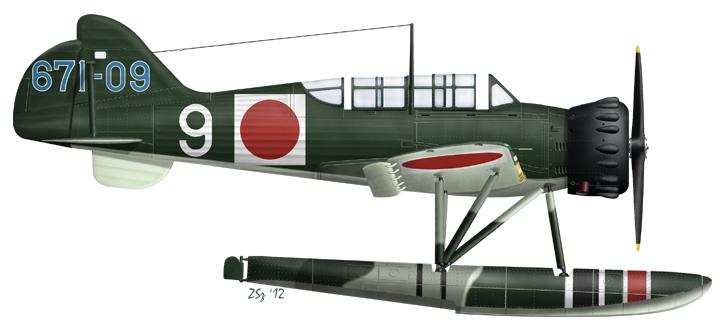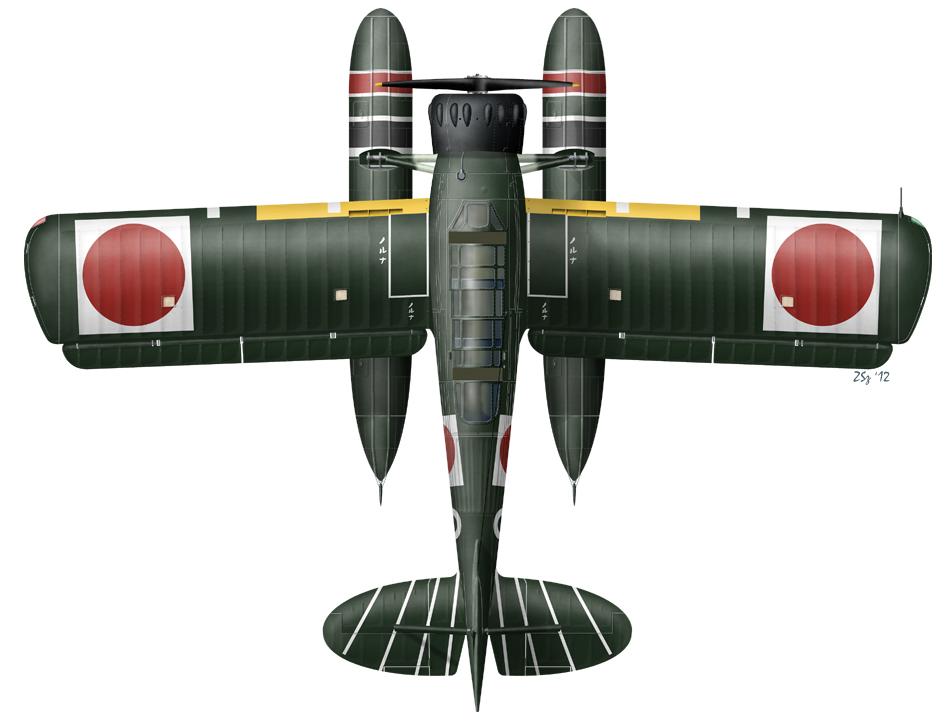“Kugisho E14Y Glen: The aircraft that bombed America.”
Mushroom Model Publications, 2012 Recently I received a package from old friend Weldon Dunlap with a great Christmas gift – Mushroom Model Publication’s new book, “Kugisho E14Y Glen” subtitled ‘The aircraft that bombed America.’ Considering the rarity of material previously available on the type, the book is quite remarkable, and reflects care and excellence in every aspect of its presentation. It’s hard to imagine any book on the “Kingyo” (Goldfish) surpassing this one any time soon, if ever.
Mushroom Model Publications, 2012 Recently I received a package from old friend Weldon Dunlap with a great Christmas gift – Mushroom Model Publication’s new book, “Kugisho E14Y Glen” subtitled ‘The aircraft that bombed America.’ Considering the rarity of material previously available on the type, the book is quite remarkable, and reflects care and excellence in every aspect of its presentation. It’s hard to imagine any book on the “Kingyo” (Goldfish) surpassing this one any time soon, if ever.
Part of this is probably due to the “team” nature of the contributors. It is written by Ryusuke Ishiguro and Tadeusz Januszewski and illustrated by Zygmunt Szeremeta, and the book closes with a special section by Dan Farnham featuring color photos of his dive at Kwajalein Atoll on the only known remains of this aircraft type, still on Akibasan Maru. Giuseppe Picarella, whose technical drawings graced Robert Mikesh’s book “Japanese Aircraft Interiors,” contributes a full-page color cutaway of the forward fuselage and cockpit sections. These should all be familiar names to those interested in Japanese aircraft that collect books and visit websites, and everyone is at the top of their game here. And the list should not omit MMP’s Editor-in-Chief Roger Wallsgrove. Most publishers are reticent to take a chance when it comes to exotic subjects, but MMP’s strength is to encourage authors to give us something new.
Dan Farnham made 26 dives to 160 feet to present in order to present those thirty colorful yet eerie images that close the book. Each of us salutes you from our armchairs, Dan! And in a way these dives are probably a metaphor for the task of research accomplished by Ryusuke and Tadeusz in presenting the story of a very obscure airplane in such admirable detail. As a teenager I remember a caption in (I think) Green and Swanborough’s “Floatplanes” of a very grainy in-flight image – “the only known photo” of an E14Y, which appears on p. 31 in this book. Forty years later much has changed for the historian and modeler with a book like this. Don’t misunderstand; any clear photos of the type remain ultra-rare. Looking through the longest section of the book that narrates the type’s operational use by Japan, I only count eight photos that could be considered “close-ups” of any clarity to show specific details.
But this challenge was surmounted. For the key to the book is the uncovering of a treasure trove of what appear to be factory archive photos and drawings clearly showing cockpit details, internal structure, cowling and engine mount details, method of folding the tail surfaces for submarine hangar stowage, etc. We’re used to seeing such meticulous and clear photographic records for Douglas, Grumman, and Boeing aircraft, as these were preserved by the manufacturers rather than destroyed. But we hardly ever see them for Japanese types unless they were for a type captured by Russian forces and exhaustively photographed. Whatever the reason that these images of an obscure Japanese submarine-launched floatplane might have survived, they were probably of great help to Zygmunt Szeremeta as illustrator, and undoubtedly essential in making Mr. Picarella’s beautiful drawing possible.
Illustrations come from the book "Kugisho E14Y Glen. The aircraft that bombed America", Publishing house "Stratus". Courtesy of Zygmunt Szeremeta.
The artwork is truly beautiful, as you’d expect if you’ve seen any of Mr. Szeremeta’s work in Arawasi International magazine and previous MMP / Mushroom books, and like the text also encompasses the airplane’s immediate predecessors, particularly the E9W1 “Slim,” an aircraft which has not received similar coverage in English anywhere else. There is a full set of 1/48 line drawings also that are the first that I can remember seeing of “Glen,” rendered by Januszewski and Dariusz Karnas. There’s a fascinating account of a Japanese sub run to Brest / Lorient for technical exchange with the German government and submarine forces, and I didn’t realize that “several E4Y1s were used by the Germans in their submarine base on Sumatra.” Along the same lines, there’s also a photo and painting of an Arado 196 (with 50 kg bombs mounted) of the “East Asia Navy Special Service Air Command (Penang)” supporting U-boats in Penang, complete with hinomarus. Now there’s a different look for your 1/32 Revell kit; and how many of you knew there was a Kriegsmarine base in Penang? I could go on, but you would be better served by getting your own copy of this one. Congratulations and thanks to the individuals who brought us this book.
Review by: Mark Smith





2 comments:
Congratulations to Ryusuke and the team that created this outstanding work.
To be able to glean so much information on such an obscure aircraft and bring it to life is a great achievement.
I can onlty agree with Mark's comments but emphasise the detailed artwork.
To me this book is a must for anyone interested in Japanese aircraft of World War II whether they be a layman or professional historian.
Again, congratulations Ryusuke...
Bob Alford
Lampang Thailand
My wife got me this as an early Xmas gift. Fascinating book, very well done, and as others have said the artwork is superb. Will come in very handy when I get around to building one of those Fujimi kits in the stash...
Post a Comment